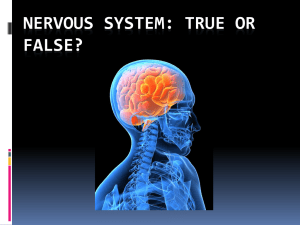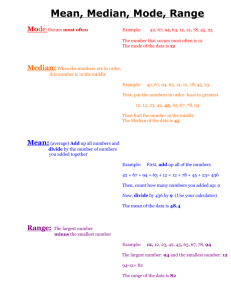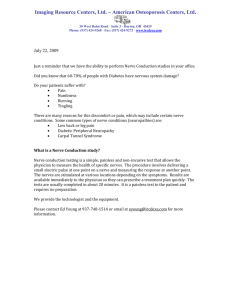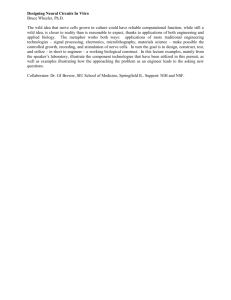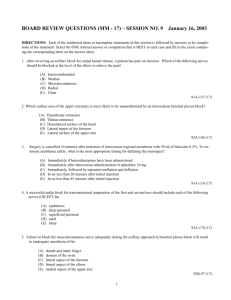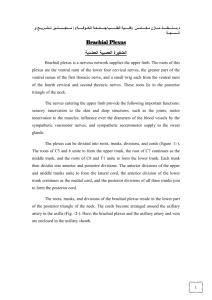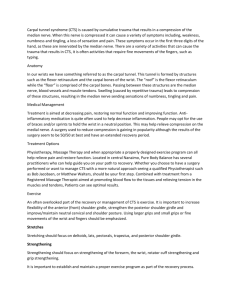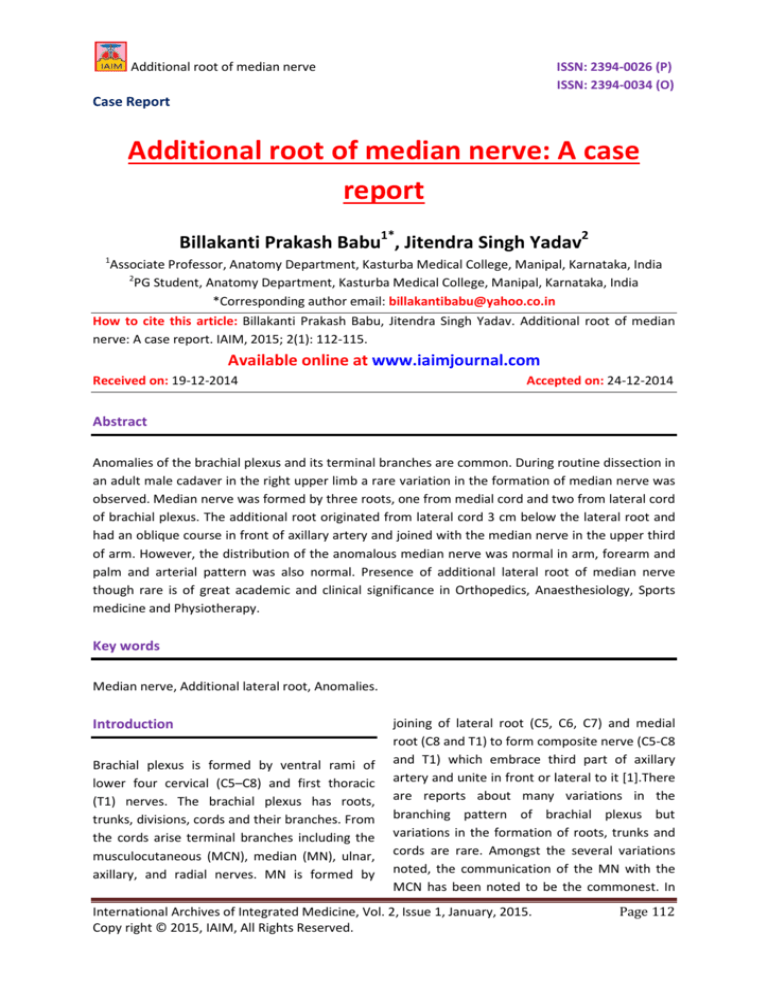
ISSN: 2394-0026 (P)
ISSN: 2394-0034 (O)
Additional
ditional root of median nerve
Case Report
Additional root of median nerve: A case
report
Billakanti Prakash Babu1*, Jitendra Singh Yadav2
1
Associate Professor, Anatomy Department, Kasturba Medical College, Manipal, Karnataka, India
I
2
PG Student, Anatomy Department, Kasturba Medical College, Manipal, Karnataka, India
I
*Corresponding author email: billakantibabu@yahoo.co.in
How to cite this article: Billakanti Prakash Babu, Jitendra Singh Yadav.
Yadav Additional
ditional root of median
nerve: A case report. IAIM, 2015;
5; 2(1):
2(1 112-115.
Available online at www.iaimjournal.com
Received on: 19-12-2014
2014
Accepted on: 24-12-2014
Abstract
Anomalies of the brachial plexus and its terminal branches are common. During routine dissection in
an adult male cadaver in the right upper limb a rare variation in the formation of median nerve was
observed. Median nerve was formed by three roots, one from medial cord and two from lateral cord
of brachial plexus. The
he additional root originated from lateral cord 3 cm below the lateral root and
had an oblique course in front of axillary artery and joined with the median nerve in the upper third
of arm. However, the distribution of the anomalous median nerve was normal in arm, forearm and
palm and arterial pattern was also normal. Presence of additional lateral root of median nerve
though rare is of great academic and clinical significance in Orthopedics, Anaesthesiology, Sports
medicine and Physiotherapy.
Key words
Median nerve, Additional lateral root,
root Anomalies.
Introduction
Brachial plexus
us is formed by ventral rami of
lower four cervical (C5–C8) and first thoracic
(T1) nerves. The brachial plexus has roots,
trunks, divisions, cords and their branches. From
the cords arise terminal branches including the
musculocutaneous (MCN), median (MN), ulnar,
axillary, and radial nerves. MN is formed by
joining of lateral root (C5, C6, C7) and medial
root (C8 and T1) to form composite nerve (C5-C8
(C5
and T1) which embrace third part of axillary
artery and unite in front or lateral to it [1].There
are reports about many variations in the
branching pattern of brachial plexus but
variations in the formation of roots, trunks
tru
and
cords are rare. Amongst the several variations
noted, the communication of the MN with the
MCN has been noted to be the commonest. In
International Archives of Integrated Medicine, Vol. 2, Issue 1, January, 2015.
Copy right © 2015,, IAIM, All Rights Reserved.
Page 112
Additional
ditional root of median nerve
the present case, we observed unilateral
additional lateral root of MN on right side in
relation to axillary arteryy that is rarely reported
in cadaveric studies. Knowledge of variable
anatomy of the nerve could help to avoid
iatrogenic injuries during surgery, e.g. in radical
neck dissection. Sometimes an additional root
may compress the blood vessels in the axilla,
leading
eading to diminished blood supply.
Case report
During routine dissection of an adult male
cadaver in the Department of Anatomy,
Kasturba Medical College, Manipal, anomalous
median nerve with regard to its formation was
found in right axilla. Median nerve
nerv was formed
by three roots, two from lateral cord and one
from medial cord. Lateral root of median nerve
and additional lateral root
ot were arising from
lateral cord and passing obliquely in front of
axillary artery and joining individually with the
medial root of median nerve and forming trunk
of the median nerve. (Photo - 1) Further
distribution of the anomalous median nerve in
the arm, forearm and palm was normal and
arterial pattern was also normal. The left
median nerve was also normal.
Discussion
The MN has two roots from lateral (C5, C6, C7)
and medial (C8, T1) cords of brachial plexus
which surround third part of the axillary artery.
Variations
ariations in the formation of MN were
reported by some earlier workers and were
related to variant relationship between
b
MN and
MCN. Study done by Satyanarayana and Guha
found a four rooted MN with three lateral and
one medial root [2]. Pandey and Shukla have
found in 4.7% cases that the roots of MN joined
on medial side of axillary artery, and in 2.3%
cases the roots did not join but continued
ISSN: 2394-0026 (P)
ISSN: 2394-0034 (O)
separately [3]. Budhiraja V, et al. reported that
anterior division of upper trunk continues as
lateral cord along with variant formation of
median nerve [4]. Study done by Eglseder and
Goldman investigated that the MN nerve was
wa
formed of two lateral roots in 14% of their
specimens [5]. Chauhan and Roy reported
formation of MN by two lateral and one medial
roots [6]. Badawoud reported a communicating
branch from upper part of a lateral root to lower
part of the medial root of median
me
nerve, in one
out of four anomalies found in a series of 48
dissected limbs [7]. A study done by Nene, et al.
reported a rare posterior union of the two roots,
with the thus formed MN coursing behind the
axillary and brachial arteries till the cubital fossa
[8].. Itoo M S, et al. reported a rare anomaly of
brachial plexus, on the right side of an Indian
male cadaver, where medial and lateral cords of
brachial plexus joined and formed a common
anomalous nerve. This nerve then divided into
medial and lateral
ral components. The lateral
division further gave origin to a smaller branch
proximally which pierced coracobrachialis
muscle and continued as a large branch which
supplied other muscles of the Flexor
compartment of arm. The larger medial branch
continued as MN [9]. Studies
tudies on fetuses by
Uysal, et al. reported the variations of the
brachial plexus to be more common in females
and on the right side [10]. According to
Hollinshead, anomalies of nerves are
accompanied by abnormalities of vessels [11].
[
The variations
tions of brachial plexus were
associated with those of subclavian, axillary and
brachial arteries [12] but in the present study,
we found no such associated vascular variation.
So many studies are done but in rare cases such
type of variation of the formation of MN by two
roots from lateral cord of brachial plexus which
are surrounding the axillary artery are less
found.
International Archives of Integrated Medicine, Vol. 2, Issue 1, January, 2015.
Copy right © 2015,, IAIM, All Rights Reserved.
Page 113
Additional
ditional root of median nerve
Photo - 1:: Formation of right median nerve by
three roots,
s, one from the medial cord and two
from the lateral cord of brachial plexus. The
medial and lateral roots join in front of the third
part of axillary artery to form the median nerve.
The additional lateral root joins separately with
the median nerve distall to the lateral root in the
upper third of arm.
ISSN: 2394-0026 (P)
ISSN: 2394-0034 (O)
After elongation of the limb buds, these muscle
splits into flexor and extensor compartments.
The position of upper limb buds are opposite the
lower five cervical and upper two thoracic
segments. As soon as the buds form, ventral
primary rami from these spinal
inal nerves penetrate
into the mesenchyme. At first, each ventral
ramus enters with isolated dorsal and ventral
branches, but soon these branches unite to form
large dorsal and ventral nerves. Median nerve
which supplies flexor musculature is formed by
combination
bination of ventral branches. Immediately
after the nerves have entered the limb buds,
they establish an intimate contact with the
differencing mesodermal condensation, and the
early contact between the nerves and muscle
cells is prerequisite for their complete
com
functional
differentiation.
Although
the
original
dermatome pattern changes with growth of
extremities, an orderly sequence can still be
recognized in adults. Miss expression of any of
these signaling molecules can lead to
abnormalities in the formation
format
and distribution
of particular nerve fibers. Once formed, any
developmental differences would obviously
persist postnatal.
Conclusion
(LRM - Latera root of median nerve, MRM Medial root of median nerve, ALR - Additional
lateral root, MN - Median nerve, MCN Musculocutaneous nerve, UN - Ulnar nerve, AA Axillary artery, AV - Axillary vein)
Embryology
At the 7th week of development limb
musculature first observed as condensation of
mesenchyme near the base of the limb buds.
The anomalies of MN though rare have definite
embryological basis and diverse clinical
presentations. Thus a sound knowledge
k
of these
anomalies is essential for academicians,
clinicians and anesthetologist performing a
surgical procedure to prevent postoperative
complications. The MN with extra roots is more
likely to be involved in entrapment syndromes
and while performing
ming orthopaedic and other
surgical interventions and may lead to sensory,
motor, vasomotor and trophic changes. It is also
very difficult for anesthetists to give infra
clavicular and other nerve blocks in presence of
these variations. Orthopaedicians also
als find it
difficult to operate and manipulate shoulder
International Archives of Integrated Medicine, Vol. 2, Issue 1, January, 2015.
Copy right © 2015,, IAIM, All Rights Reserved.
Page 114
ISSN: 2394-0026 (P)
ISSN: 2394-0034 (O)
TS. Communication
median
and
nerve – A case
India, 2002; 51: 72–
72
Additional
ditional root of median nerve
joint in presence of these nerve anomalies. It is
also important for neurosurgeons in tumors of
nerve
sheath
like
schwannomas
and
neurofibromas. Such variations are also clinically
very important in post-traumatic
traumatic evaluations
and exploratory interventions of the arm for
peripheral nerve repair.
References
1. Williams PL, Bannister LH, Berry MM, et
al. Gray’sAnatomy.. In: Nervous System.
38th
edition..
London
Churchill
Livingstone, 1999; p. 1270.
2. Satyanarayana N, Guha R. Formation of
median nerve by four roots. J Coll Med
Sci., 2008; 5: 105–107.
3. Pandey SK, Shukla VK. Anatomical
variations of the cords of brachial
plexus and the median nerve. Clin Anat.,
2007; 20: 150–156.
4. Budhiraja V, Rastogi R, Khare S, Jain S. A
rare variation in the formation of the
lateral cord and median nerve of
brachial plexus - A case report. People’s
journal of scientific research, 2009; 2(1):
17-18.
5. Eglseder WA Jr, Goldman M. Anatomic
variations of musculocutaneous nerve in
the arm. Am J Orthop (Belle Mead NJ),
1997; 26: 777–780.
Source of support: Nil
6. Chauhan R, Roy
between
the
musculocutaneous
report. J Anat Soc
75.
7. Badawoud MHM. A study on the
anatomical variations of median nerve
ner
formation. Bahrain Medical Bulletin,
2003; 25(4): 1-5.
8. Nene AR, Gajendra KS, Sarma MVR.
Variant formation and course of the
median nerve. IJAV3, 2010, 93-94.
9. Itoo M S, et al. Anomalous origin and
branching pattern of median and
musculocutaneous nerve.
nerve KMJ, 2010;
4(2).
10. Uysal II., Seker M., Karabulut AK., Ziylan
T. Brachial plexus variations in human
fetuses. Neurosurgery,
Neurosurgery 2003; 53(3):
676-684.
11. Hollinshead WH. Anatomy for Surgeons.
Philadelphia, Harper & Row, 1982; p.
220–223.
12. Sargon MF, Uslu SS, Celik HH, Aksit D. A
variation of the median nerve at the
level of brachial plexus. Bull Assoc Anat
(Nancy), 1995; 79: 25–26.
25
Conflict of interest: None declared.
International Archives of Integrated Medicine, Vol. 2, Issue 1, January, 2015.
Copy right © 2015,, IAIM, All Rights Reserved.
Page 115

